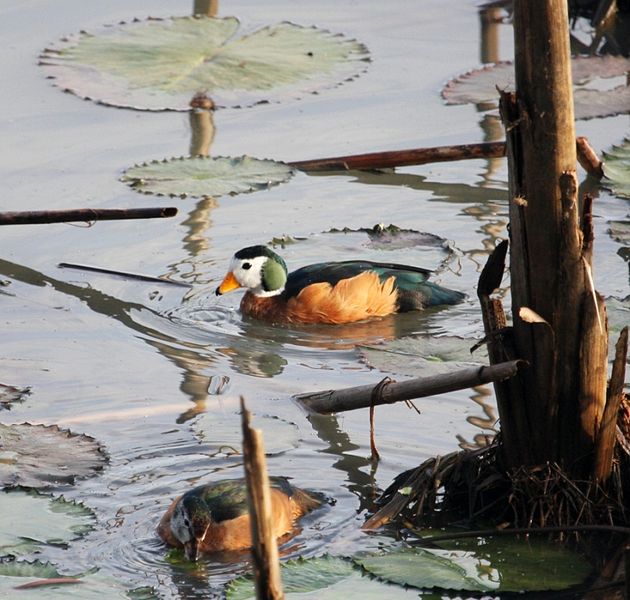 With very few exceptions, providing one’s birds (or any other animal) with more space is beneficial on many levels. However, while keeping White-Crested Laughing Jay-Thrushes, Garrulax leucolophus, I learned that nasty surprises may be in store.
With very few exceptions, providing one’s birds (or any other animal) with more space is beneficial on many levels. However, while keeping White-Crested Laughing Jay-Thrushes, Garrulax leucolophus, I learned that nasty surprises may be in store.
White Crested Laughing Jay-Thrushes are among the most amusing and curious birds one can imagine, and they are often star attractions in both private and public collections. Unfortunately, due to their size (10-12 inches), insatiable curiosity and high level of activity, they are suitable only for an outdoor aviary or room-sized indoor enclosure…but as pets or study subjects they have few rivals.
Peaceful Coexistence Shattered
Many years ago I looked after four Jay-Thrushes that were housed together in a large flight cage at the Bronx Zoo. They got along well for 10 months or so, and when the adjoining flight cage became vacant I opened the door that separated the cages so that the birds would have more room.
I made the mistake of doing this at day’s end, and did not observe the birds for long after giving them access to their expanded quarters. Next morning, two of the Jay-Thrushes were dead.
Extra Space – Positives and Negatives
It seems that the provision of extra space can trigger territorial or breeding behaviors that were suppressed because the original cage did not allow sufficient space to establish a territory.
This is surprising, in a way, but even animals known for aggressive behavior towards others of their kind may get along in cramped quarters (this is not to be encouraged, of course, but it explains quite a lot). I’ve since seen this phenomenon play out with animals as diverse as Cuban Crocodiles, African Pygmy Geese (please see photo) and Peccaries…even long-term pairs may fight if the change spurs one but not the other into breeding condition.
 Conversely, larger quarters can also allow for the coexistence of birds that would not get along in smaller areas. There is a fine line, and the keys to finding it are an understanding of your birds’ natural histories, and careful observation following the provision of extra space.
Conversely, larger quarters can also allow for the coexistence of birds that would not get along in smaller areas. There is a fine line, and the keys to finding it are an understanding of your birds’ natural histories, and careful observation following the provision of extra space.
The Gang of Four
Happily, the 2 “killers” got on quite well with another pair of jay-Thrushes after being introduced into a half acre exhibit. Their keepers took to referring to the birds as a “gang”, as they were always into some type of mischief.
Amazingly bold, and quick to take advantage of any opportunity, one Jay Thrush made off with a visitor’s keys the moment they were dropped. A cohort of hers/his (sexes are impossible to differentiate by sight) stole a small lever belonging to a cash register that was being repaired in the exhibit’s entryway (“normal” birds steered clear of this very busy area!). The pilfered lever, hidden by the bandit, was longer being manufactured, and so the register was discarded!
Further Reading
Jay Thrush videos and information from Zoo Atlanta.
How Much Room Does a Finch Need?
 That Bird Blog – Bird Care and History for Pet Birds
That Bird Blog – Bird Care and History for Pet Birds




Wouldn’t it be a lot easier to have separate cages for animals that are too territorial. Not only will the birds have more space for themselves, but in the end will be a lot happier and easier to take care of.